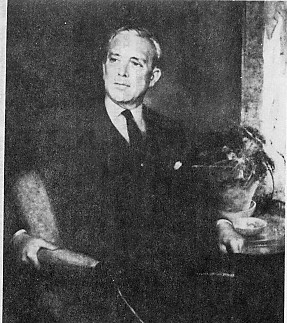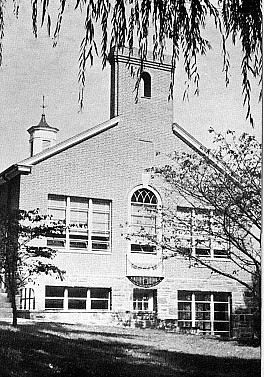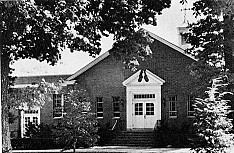|
|
|
|
|
| 1942
In September, as World War II began, Mr. Boocock was called into the service of his country. Leslie R. Severinghaus was appointed by the Board of Directors to take on the duties of headmaster. Dr. Severinghaus joined The Haverford School in 1929 and served as head of the English department for 12 years. He was to act as headmaster until 1965. 1943
After much consideration, it was "deemed unwise to recondition
the damaged dorm facilities...", with the Board deciding to give up the
boarding department and make Haverford entirely a country day school. The
60th anniversary of the school ended on a sad note, with the end of the
boarding department. The students who were boarders at that time became
some of the most loyal alumni the school will ever have.
|
1944
With the war still raging overseas, Haverford students would often be seen picking fruit in the nearby orchards, as the owner desperately needed labor, because all of his workers were off serving their country. In the midst of the war, the school made an administrative change. L. Cheney Smith, who served as head of the Junior School (1923-1944) joined the mathematics department of the Senior School; Dean H. Webber was appointed to head of the Junior School, a position he held until 1966. 1945
The Board of Trustees decided the fund would be used to improve the facilities, especially in the field of science. The goal of the War Memorial Fund was $400, 000.00 in order to erect a War Memorial Building. Dates and collection of money: December 1945 - $110,207.79
1949
|
1951
Enrollment reached a new peak at 646 boys. Three hundred and sixty Senior School students and two hundred and eighty-six Junior School students. 1955
As soon as "the Oaks" was torn down, a new building, which Forms I and
II would occupy was built. The new building was completed in October 1955,
and dedicated to Charles S. Crosman, the first headmaster of the
school. The building was named Crosman Hall. In the same month,
the Senior School was dedicated to Edwin M. Wilson, and named
Wilson
Hall.
|
1956
In October, the school launched a campaign, headed by Bradford Smith, Class of 1920, to raise $500, 000 for a new Junior School. 1957
1959
The Haverford School's 75th anniversary was celebrated in 1959 with Dr. Arthur Sherwood Flemming, a member of President Eisenhower's cabinet speaking. The school enrollment in September 1959 was 780 students.
|


